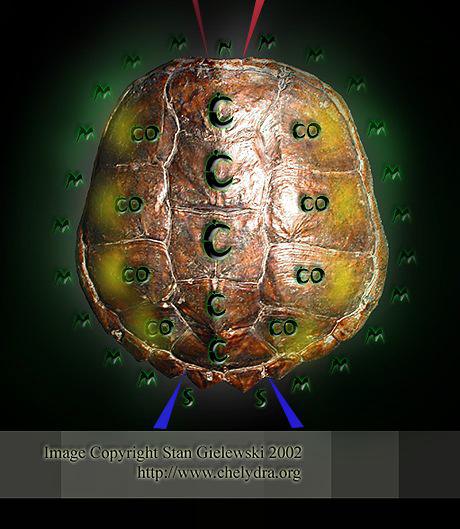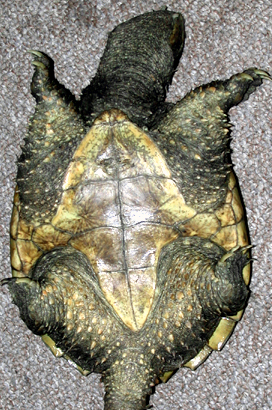What makes the turtles so different from other reptiles ? The shell !
In most turtles the bony shell structure is covered with a layer of horny scutes.
The bony shell, made up of a series of connected individual plates, is well supplied with blood vessels. It grows by deposition of a new layer around the edges of each individual bone, and the scutes grow by deposition of a new horny layer on the surface of the bone. One scute can cover several bones of the shell.
In theory, the age of a turtle can be estimated by counting the number of the wrinkled rings
formed around the edges of each scute. The growth of shell in many species from
climates with cold winters and warm summers proceeds in cycles, with a new wrinkle formed at
the end of the season. However, the scutes of many aquatic turtles peels off frequently,
and become thin and smooth.
Also, the scutes of many land tortoises become worn down due to mechanical abrasions, and a
captive turtle lacks the annual growth rings found on wild individuals.
Consequently, estimating the age of turtles by counting the growth rings of the scutes cannot be
considered a reliable method of judging the turtle's real age.
The individual scutes have their own names, and the following picture describes
scutes of the
carapace ( left ) and plastron ( right ).
The scutes names are:
Carapace
- N - nuchal
- C - centrals
- Co - costals
- M - marginals
- S - supracaudals
 |
Plastron
- I - intergular
- G - gular
- H - humeral
- P - pectoral
- Ab - abdominal
- F - femoral
- An - anal
 |
The scutes in three families: Trionychidae, Dermochelyidae and Carettochelyidae have
been eliminated and replaced with soft skin.
|